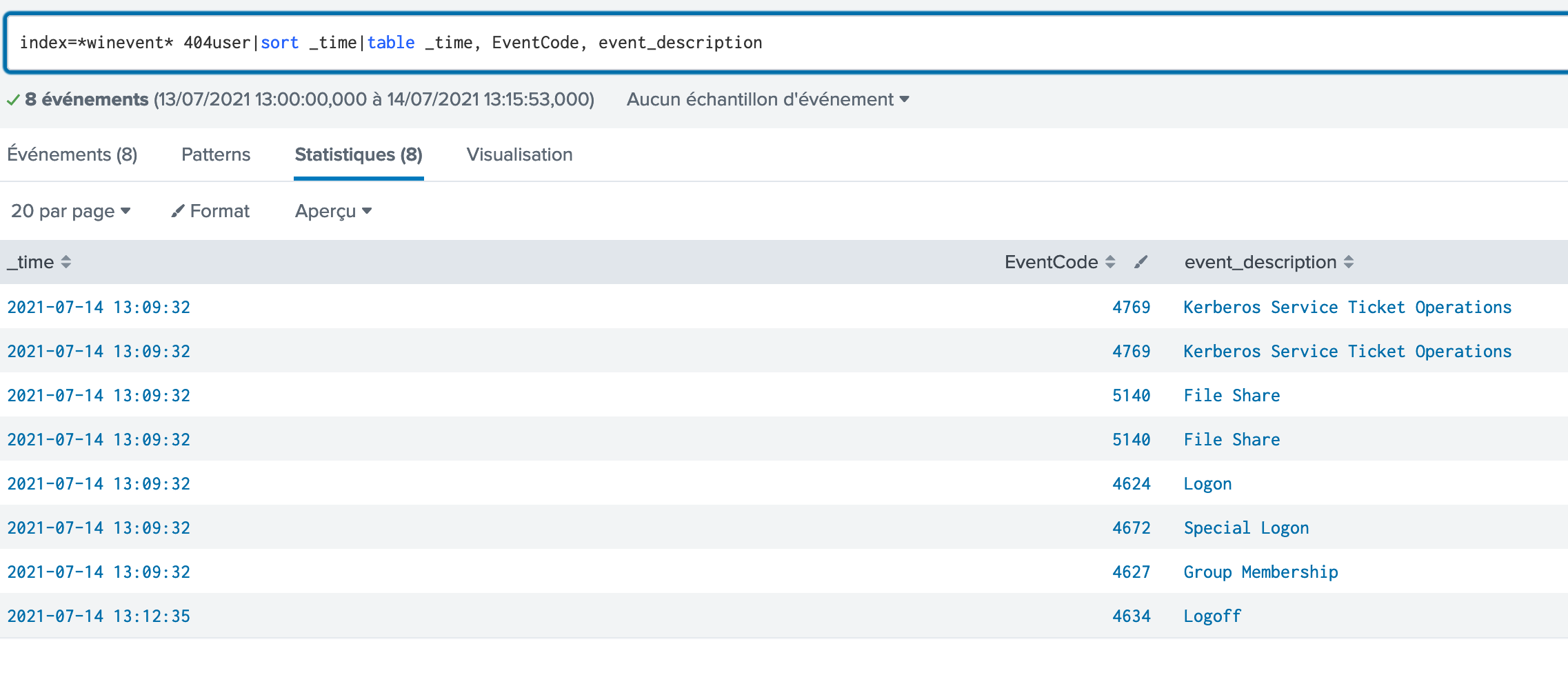Detecting Golden Ticket attacks
Technical Context
The Graal for an attacker is to compromise the KRBTGT secret, the master key encrypting everything in the Active Directory.
Once in its possession, adversaries are free to perform “Golden Ticket” (T1558.001) attack later on. In a nutshell, this technique allows the attacker to create new Kerberos Ticket Granting Tickets (TGT) on the fly, directly from their laptop.
Catch me if you can
From a defender’s perspective, the publicly available detection techniques are limited, basically matching the default values of Mimikatz. From our experience, they are quite unreliable because of… Legacy infrastructure 🤐.
Nonetheless, in theory, the detection strategy is straightforward: For each successful authentication (EventID 4624), verify that a prior TGT and TGS were issued and logged correctly by a Domain Controller.
But in practice:
- Obviously, you can not apply these checks for all connections because it would kill your SIEM.
- Maintaining a list of Administrators/VIP is generally not sustainable nor effective for various non-technical reasons.
- Doing the filtering based on username is not effective as the adversary can add high privileges to normal Domain Users or even to non-existing users.
TL;DR: We were stuck.
The unlocking factor: EventID 4627
Microsoft introduced in Windows 10 and 2016 a new event message: Event ID 4627 is emitted after successful authentication. As a companion to Event ID 4624, it lists the group membership of the logged-in user.
This subtle event unlocks everything: Without having to rely on usernames’ watchlist, we can narrow down authentications of specific groups (such as Domain Administrators) immediately.
The scenario
Using the awesome DetectionLab 💙, I ran the following scenario:
- I acquire the KRBTGT secret
- I create a Golden Ticket for a non-existing user
404user - From a “compromised” workstation, I
dir \\dc\c$to verify everything worked.
Eventually, here are the matching logs:

The interesting part is the EventID 4627:
<EventData>
<Data Name="SubjectUserSid">S-1-0-0</Data>
<Data Name="SubjectUserName">-</Data>
<Data Name="SubjectDomainName">-</Data>
<Data Name="SubjectLogonId">0x0</Data>
<Data Name="TargetUserSid">S-1-5-21-1563626495-2931527320-2379504161-500</Data>
<Data Name="TargetUserName">404user</Data>
<Data Name="TargetDomainName">windomain.local</Data>
<Data Name="TargetLogonId">0x8ff9c1</Data>
<Data Name="LogonType">3</Data>
<Data Name="EventIdx">1</Data>
<Data Name="EventCountTotal">1</Data>
<Data Name="GroupMembership">
%{S-1-5-21-1563626495-2931527320-2379504161-513}
%{S-1-1-0}
%{S-1-5-32-544}
%{S-1-5-32-545}
%{S-1-5-32-554}
%{S-1-5-2}
%{S-1-5-11}
%{S-1-5-15}
%{S-1-5-21-1563626495-2931527320-2379504161-512} <---- Added by Mimikatz
%{S-1-5-21-1563626495-2931527320-2379504161-520} <---- Added by Mimikatz
%{S-1-5-21-1563626495-2931527320-2379504161-518} <---- Added by Mimikatz
%{S-1-5-21-1563626495-2931527320-2379504161-519} <---- Added by Mimikatz
%{S-1-5-21-1563626495-2931527320-2379504161-572} <---- Added by Mimikatz
%{S-1-16-12288}
</Data>
</EventData>
</Event>
Now that we have all the pieces in mind, let’s build a Detection Strategy.
Strategy Abstract
This alerting & detection strategy will function as follows:
- Filter “Group Membership Information” (EventID 4627) matching a monitored group
- For each match, check if a TGT (EventID 4768) were issued accordingly
- Alert 🚨 if no TGT can be found
Step 1: Filter Group Membership Information
search index=*winevent* 4627
EventID=4627
LogonType IN (3, 10)
TargetUserName!="*$"
(512 GroupMembership="*-512}*") OR
(544 GroupMembership="*-544}*") OR
(519 GroupMembership="*-519}*")
...
| makemv tokenizer="%\{(.*?)\}" GroupMembership
| mvexpand GroupMembership
| search GroupMembership IN (
"*-512",
"*-544",
"*-519",
...
)
| search NOT GroupMembership IN ("S-1-5-32-544")
| table _time, host, TargetLogonId, TargetUserName, GroupMembership
This search will return all connections of “interesting” groups.
Step 2 and 3: Check if a prior TGT was emitted
So we have a list of sensitive connections, now we want to check that a TGT was requested priorly for each of them.
no_tgt = set()
for user in logged_users:
spl = f'search index=*winevent* 4768 EventID=4768 {user} TargetUserName="{user}"'
spl += f''
# Get the first connection timestamp
first = df_group_ms[df_group_ms['TargetUserName'] == user].sort_values("_time", ascending=False).head(1)
since = pd.to_datetime(first.iloc[0].get("_time"), utc=True)
# This means that if a TGT was issued, it was in the 10 previous hours (by default)
oldest = since - datetime.timedelta(hours=10)
newest = since
#print(f"oldest={oldest} newest={newest}")
df = certpy.siem.session.search_df(spl, start_time=oldest, end_time=newest)
if df.size == 0:
sys.stderr.write(f"ALERT on {user}, no TGT was requested\n")
no_tgt.add(user)
(Extracted from our Jupyter notebook running the ADS)
Blind spots and Assumption
Blind spots
A blind spot may occur under the following circumstances:
- If the attacker is connecting to a server older than Windows 10 and 2016 (because Event 4627 is not available).
- The attacker may use NTLM to authenticate (This is offtopic as this would not be a Golden Ticket attack)
- If both the attacker and the real user are using the account the same day (the real user will ask legitimately a TGT)
Assumption
This strategy relies on the following assumptions:
- The ESAF is clean.
False Positives
The following events will result in a false positive:
- If there is a loss of Windows Event Logs (if one Domain Controller stops sending its events, or there is an ingestion problem), we may be unable to find a TGT legitimately emitted and may generate an erroneous alert.
Validation
To validate this ADS:
- On a DC, acquire the KRBTGT secret:
mimikatz.exe "privilege::debug" "lsadump::dcsync /user:windomain\KRBTGT" exit - On a workstation:
klist purgemimikatz.exe "kerberos::golden /domain:windomain.local /user:404user /aes256:1234abcde /sid:S-1-5-21-1563626495-2931527320-2379504161 /ptt"dir \\dc\c$
Alert Priority
High